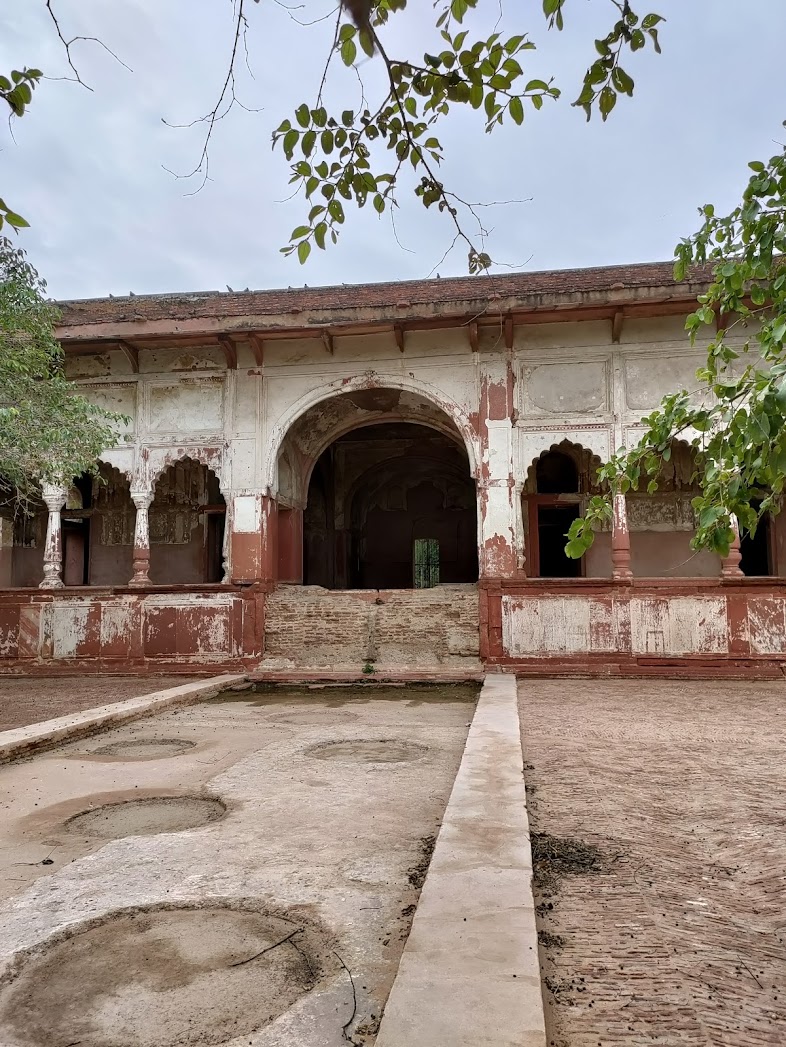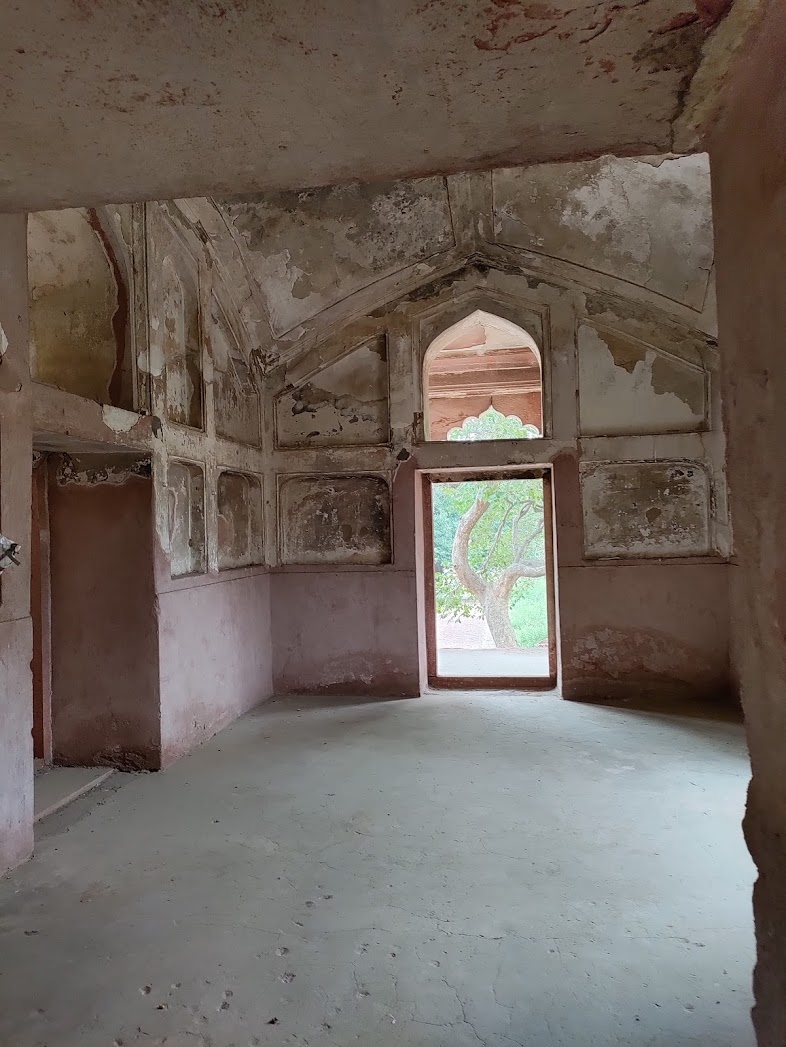

The Sheesh Mahal in the Shalimar Bagh of Delhi was part of the Shalimar Garden, a Mughal garden built by Emperor Shah Jahan in 1653. The Shalimar Bagh served as a summer retreat for the royal family and was used by the emperor for important ceremonies. The Sheesh Mahal, or "Palace of Mirrors," was an integral part of the structure, known for its intricate mirror work that adorned the interior, reflecting the opulence of Mughal architecture. The garden itself followed the traditional Charbagh style, which divided the garden into four sections symbolizing paradise. Over time, the Sheesh Mahal has suffered damage and decay due to neglect and historical upheavals. Today, it is a shadow of its former glory, with much of the structure in ruins, although restoration efforts have been made to preserve what remains of the site. Shalimar Bagh also holds historical significance as it was where Aurangzeb was crowned the emperor after imprisoning his father Shah Jahan.